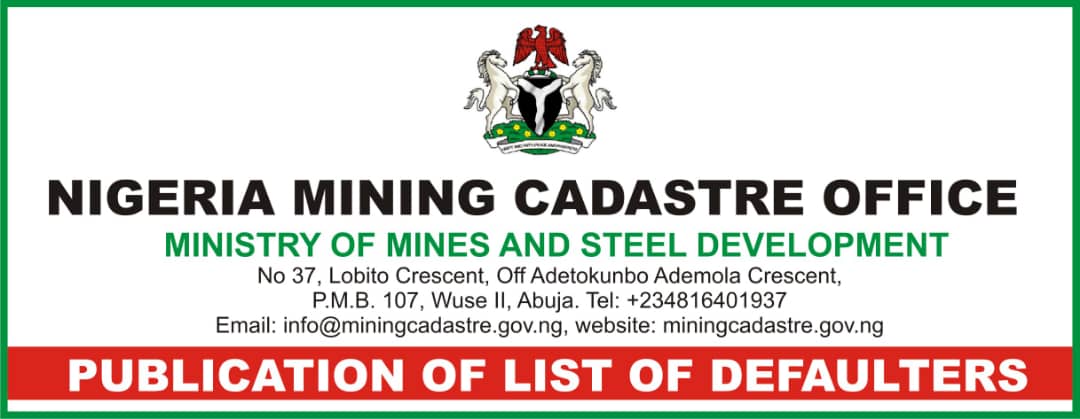
The National Centre for Technology Management (NACETEM) on Wednesday said that Nigeria’s leather industry had the potential to generate over one billion dollars by 2025.
Mrs Maryanne Onyejekwe, the South-West Zonal Coordinator, NACETEM, made this known at its Research Output Conference 2024 held in Lagos.
TRUTHNG reports that the theme of the conference was, “Leather Sector Assessment and Local Content Policy Studies.”
Onyejekwe said that Nigeria was the highest producer of leather and finished leather products in Africa.
She added that Nigeria was not only the largest producer of leather in Africa, but that its leather ranked among the highest quality leather found globally.
According to her, the industry generates about $600 million to $800 million annually, hence, the subsector can be a key driver of Nigeria’s economic growth and development.
“Also, the leather processing and fabricating industry aligns perfectly with national goals by actively contributing to the country’s industrialisation efforts.
“To unlock its growth potential and overcome challenges, the leather processing and leather fabricating industry in Nigeria can explore international collaboration and investment opportunities.
“Technology transfer and collaboration with international partners can facilitate the transfer of advanced tanning technologies and best practices.
“International collaboration can help leather processing firms gain access to the global market, partnerships with foreign distributors and retailers can open doors to new customer base,’’ she said.
Speaking about local content in the subsector, Onyejekwe noted that its development and utilisation in all sectors of the nation’s economy would increase employment ratio geometrically.
Onyejekwe, who was also a director in NACETEM, said that local content would stimulate value creation and addition, and also improve the per capita income of the critical mass of its labour force.
According to her, it is in the light of the benefits of local content that the Federal Government passed into law the Petroleum Industry Act (PIA) and by extension and most germane to the discourse, the Presidential Executive Order 5.
She said that the Presidential Executive Order 5 was to develop, promote and enforce local content and Made-In-Nigeria Goods and Services (MNGS).
She said that local content development was critical for economic growth and development of the nation, adding that it was more aptly so in the face of dwindling economic fortunes and increasing unemployment.
The director noted that Nigeria was more committed to its industrialisation efforts and reducing its dependence on Oil.
Onyejekwe said that local content in terms of manpower, raw materials, technologies and machinery for Made-In-Nigeria Goods and Services (MNGS) offered the required trajectory to becoming an industrialised nation.
“It will also ensure a major shift from a consuming to a producing nation, thereby increasing import substitution and the nation’s Gross Domestic Product (GDP), entrenching economic diversification, and impacting foreign exchange.”
In her presentation, Mrs Olayemi Dickson, Assistant Chief Research Officer, NACETEM, said that Nigeria’s Leather was highly demanded in Italy, Spain, India, China, among others.
Dickson said that leather exporting companies in Nigeria produce over 8,000 jobs with export value of about $272 million in 2022.
According to her, in order to meet up with international and local demands, the leather firms in Nigeria require a high level of technological capability.
“Technological capability include firm level technological capability and national level technological capability.
“Firm level capability includes a firm’s specific collection of equipment, skills, knowledge, attitudes and aptitudes needed to choose, install, operate, maintain, understand, adapt, improve and develop technologies.
“On the other hand, national level technological capability is the collection of individual firm-level capabilities,” Dickson explained.
In his presentation, Assistant Director, Research, NACETEM, Dr Victor Sobanke, said that the leather industry made up about 24 per cent of the Agricultural Sector’s contribution to Nigeria’s GDP.
Sobanke said that unfortunately, despite the potential of the industry, the productivity of the sector was decreasing with unsophisticated technology resulting in substandard and low-quality leather products.
He said: “In fact, Nigeria is a net importer of finished leather products of about $500 million annually.
“Nigeria needs to convert its leather resources to fashionable finished products that are competitive in the world’s fashion markets.’’
Assistant Director, NACETEM, Dr Mirabel Omoruyi, in her presentation, highlighted the importance of awareness to local content practices in Nigeria.
Omoruyi said that Ministries, Departments and Agencies (MDAs) had average to high-level awareness; while private firms are mentally aware but lacked in-depth understanding of its working details.
She recommended that relevant MDAs and stakeholders embark on vigorous creation of greater awareness about local content policies and its provisions, to sensitise public and private sector organisations.
Also, the Head, Media and Publicity, NACETEM, Dr Olutunde Babalola, said in his presentation that the biggest challenges to local content adoption are low technical expertise, inadequate infrastructures and obsolete local technologies in the MDAs.
Babalola said that private firms had low technical expertise, low industrial capacity, substandard quality of made-in-Nigeria goods, superior substitutes, etc.
He said that other challenges were multinational corporations favouring foreign substitutes, bureaucracy in obtaining permits and licenses, substandard quality, obsolete local technologies, inadequate infrastructures among others.
Babalola emphasised the need for awareness, while recommending building the capacity of Nigerian experts or workers and providing adequate industrial and infrastructural facilities.
The head of media said that other recommendations included improving the quality of Nigerian goods and services and developing a stronger industrial culture with complementary forward-looking regulations.
He reiterated the need to create awareness of local content policy and its benefits.
The Director-General, NACETEM, Dr Olusola Odusanya, said that some of the analysis done in recent times indicated that among a community of nations with similarities with Nigeria, one error Nigeria committed was lacking an industrialisation focus and export orientation.
Odusanya said that as a result of which most industries in Nigeria started facing problems when the local economy started facing problems.
According to him, if Nigeria has an industrialisation plan and focus on export, it will have a sustenance mechanism that allows its industries to thrive.
The NACETEM boss said: “If, we had a export and industrialisation focus with the rubber industry, we would have ensured and had a situation where tyres, truck tyres, inner tubes and all the auxiliary materials produced from rubber will have been international products rather than local products.
“So, there is a need for an aggressive reorganisation of the entire industrialisation system of Nigeria.”
TRUTHNG reports that the highlight of the event was the launch of a book by the NACETEM research team.








